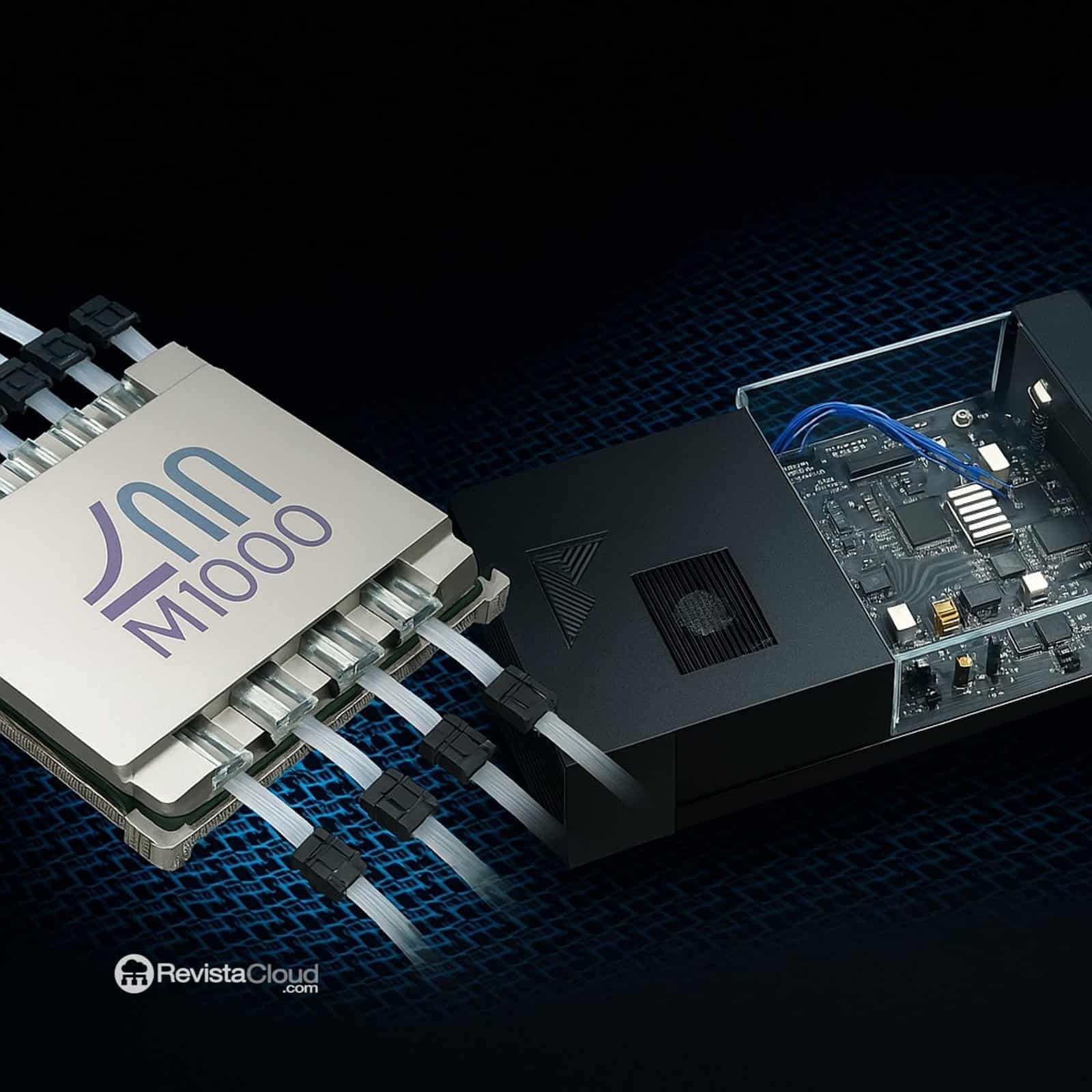After years of development, light-based technology instead of electricity is starting to perform conventional tasks and threatens to revolutionize traditional computing.
In a world where Moore’s Law has become outdated and transistors are nearing their physical limits, the tech industry is seeking new avenues to boost computing power. While quantum computers grab headlines for their disruptive potential, photonic processors—using light instead of electricity—have taken a crucial step: they are already capable of executing conventional tasks with performance comparable to current CPUs.
In recent weeks, two independent advancements have caught the attention of the scientific community. The Singaporean company Lightelligence has demonstrated that its PACE (Photonic Arithmetic Computing Engine) processor can solve Ising problems, which are widely used in logistics and optimization applications. Meanwhile, the American company Lightmatter has successfully executed text generation tasks using the AI model BERT on its photonic chip Envise.
Both cases mark a turning point: for the first time, photonic chips are not only shining in experimental applications but are beginning to show their viability in everyday computing.
What is a photonic processor?
Unlike traditional CPUs that process information through the movement of electrons across transistors, photonic processors use photons—light particles—to encode and transmit data. This technology is not new: fiber optics, widely used in telecommunications, already transports information through light pulses. However, integrating this capability into a computational chip has been a significant challenge that is now starting to be resolved.
Key Advantages of Photonic Chips
The benefits of processing with light compared to electricity are numerous:
- Speed: photons travel faster than electrons, significantly reducing latency.
- Energy efficiency: by not facing material resistance, photons generate much less heat. This reduces energy consumption and minimizes cooling requirements.
- Data density: the technology allows for parallel channels and higher bandwidth, facilitating the transmission of large volumes of information without bottlenecks.
According to researchers at Columbia University, recent advancements in photonic chips integrated with traditional CMOS circuits can achieve speeds of up to 800 Gb/s with densities of 5.3 Tb/s/mm², a significant leap for artificial intelligence and high-performance computing applications.
From Proof of Concept to Market
While they are still not ready to replace conventional CPUs, the first commercial applications of photonic processors are close. The PACE model from Lightelligence can already be installed in any PC via a PCIe connector card. The first real-world applications are expected to be in specific acceleration tasks, such as AI inference, logistical optimization, or signal processing.
In the words of Bo Peng, founder of Lightelligence, “we are in pre-production phase and foresee the first real implementations in the coming months.” Their strategy is to offer photonic chips as co-processors that work alongside traditional CPUs, alleviating specific workloads and improving overall system efficiency.
A Building Ecosystem
Beyond Lightelligence and Lightmatter, the integrated photonics sector is gaining traction worldwide. Materials such as indium phosphide (InP), silicon nitride (SiN), and silicon photonic (SiPh) platforms allow for the production of optical components that can be integrated with conventional electronics.
Leading research centers in this field include the University of California, Santa Barbara, Eindhoven University of Technology, and the Technical University of Denmark, where researchers managed to transmit 1.84 petabits per second on a single photonic chip, a world record.
Furthermore, photonics is not limited to computing: it is already being applied in medicine (non-invasive optical diagnosis), agriculture (sensors to detect diseases in crops), and automotive (light-based LIDAR and vehicle-infrastructure communication).
Photonics vs. Quantum Computing: Rivalry or Coexistence?
Although both aim to transcend the limits of traditional computing, photonic and quantum processors are based on very different fundamentals. While quantum computers leverage superposition and entanglement states to process information probabilistically, photonic chips rely on more conventional physical principles and are easier to integrate into current computing environments.
For this reason, many experts envision a future where both technologies coexist: quantum computing for highly specialized problems and photonics to accelerate data-intensive tasks within existing infrastructures.
An Increasingly Close Future
With the first real-world tests passed and leading companies working on commercialization, photonic computing is entering a new phase. The challenge now is to industrialize production, reduce costs, and build compatible software ecosystems that allow developers to harness its full potential.
Meanwhile, electronic CPUs will continue to play their role, but their reign is beginning to show cracks. If the progress of photonics maintains its current pace, we could be witnessing the greatest revolution in recent computing history.
Light, just as it transformed telecommunications, could be the key to the next big leap in computing.

